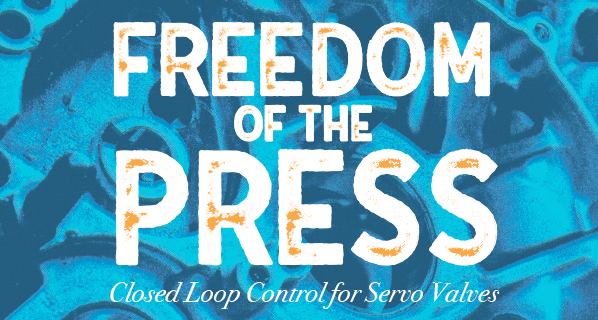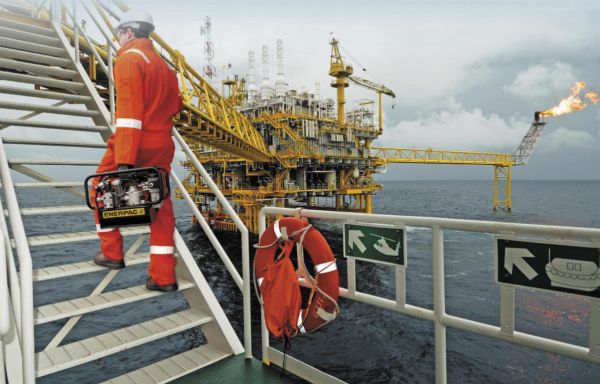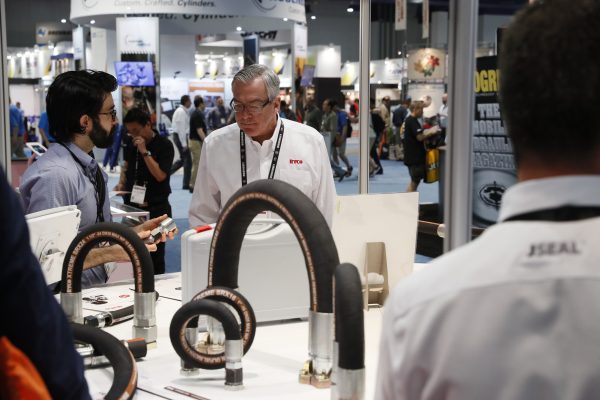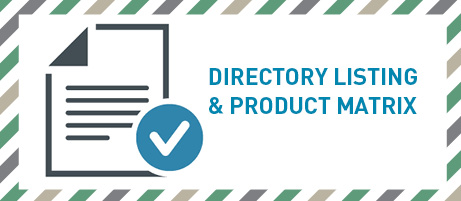Predicting the Mobile Market: Q & A
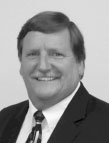 Mel Arent, EMMEGI Heat Exchangers Inc.
Mel Arent, EMMEGI Heat Exchangers Inc.
Mel is the general manager of EMMEGI Heat Exchangers Inc. in Phoenix, Ariz. He has over 34 years of experience designing and applying heat exchangers serving both the mobile and Industrial markets.
 Terry Hershberger, Bosch Rexroth
Terry Hershberger, Bosch Rexroth
Terry is a mobile applications market veteran providing years of electronic and hydraulics integration experience. He is currently the director of sales product management mobile applications for Bosch Rexroth in the U.S.
terry.hershberger@boschrexroth-us.com
 David E. Thun, Power Systems LLC – an Applied Industrial Technology Subsidiary
David E. Thun, Power Systems LLC – an Applied Industrial Technology Subsidiary
David was the first employee hired by Power Systems LLC’s founder in 1968 and currently is president of the company. He has been instrumental in developing most of the operational departments, inside and outside sales, and the engineering department.
 Christopher Jankowiak, CFPAI/AJPP, CFPMM, CFPMT, Anderson Equipment Co.
Christopher Jankowiak, CFPAI/AJPP, CFPMM, CFPMT, Anderson Equipment Co.
Christopher has been an Accredited Instructor since 1993 and has been employed at his current company as corporate service support manager and safety coordinator since 1997. He has also been a Komatsu America Corp. Certified Instructor since 1997.
What areas of growth or opportunity do you see developing in the domestic/international market?
ARENT: The Tier 4 emission control regulations are one of the most significant issues facing the mobile industry today. Increased heat loads require larger cooling systems, and the addition of after-treatment components creates challenges in both design and cost. New cooling systems and controls will need to be applied to help achieve compliance.
HERSHBERGER: Machine builders continue to look towards technology to improve the total cost of ownership for customers. Continued approaches of implementing control schemes, including optimum transfer of available energy from the engine utilizing electronics and electrohydraulic controls, will be the norm. Connectivity to the machine through remote diagnostics and machine-monitoring systems also are requested more. This technology has been available in the agriculture industry for years and will be further implemented with on-road and off-road machines. Import and export tax law continues to have an impact on the marketplace as many manufacturers and suppliers aim to “localize” product and machine supply. Machine builders will demand suppliers who will combine global supply chain strength and stronger local engineering, manufacturing resources, and application development.
THUN: In both the domestic and international markets, the focus is on making machines more productive and intelligent, thus substantially decreasing labor cost to the end user. By marrying hydraulics and electronics, we have the opportunity to increase market share. One area of concern is emerging markets. Do we have the products and production facilities to achieve their goals? We need to find an economical way to penetrate these new emerging markets as they develop.
JANKOWIAK: In my part of the country, as well as in other areas, I see increased natural gas production as the largest growth market. The construction of gas well pad sites and pipelines has had a positive effect on the sales and rental of various mobile equipment types and models. I anticipate more electric power plants converting from coal to natural gas, which will stimulate growth in the gas market as it reduces the local demand for coal and, therefore, mining machinery. There is potential for an increase in coal exports, which would help increase employment as well as offset this country’s huge trade deficit. Government legislation, however, may not permit that mining to occur.
What government regulations do you see impacting the market?
ARENT: Tier 4 emission control regulations.
HERSHBERGER: The machine directive ISO13849 is having an impact on both the machine builder who is responsible for the availability and performance level of the machine in regards to operational hazards, risks, and safety, as well as the supplier in regards to providing reliability and time-to-failure information. While the Tier 4 engine emission regulations for many machines have already been addressed, there are still considerations and regulations that are planned for smaller engines. This will have an impact on smaller machines in regards to maintaining performance and machine footprint while complying with the regulations.
THUN: Businesses sometimes unintentionally use government regulations as an excuse not to grow. My view is to thoroughly understand regulations affecting business areas, and then work to market, sell, and penetrate accordingly. In other words, I do not see government regulations as substantially impacting business or new product growth. The model for business should be “react immediately,” taking into account government regulations as opposed to using them as a crutch.
JANKOWIAK: The biggest regulatory impact I’ve seen in recent years is the government’s apparent, but denied, war on the coal industry. Government regulations have not only affected mining jobs directly, but many other large and small businesses and their employees also have been greatly affected by loss of business and jobs, as all the support people and supply chains to that industry suffer. In addition, the overall loss of business and jobs has a great effect on local economies in those areas where mining has been reduced or even eliminated. In a lot of small localities, coal mining is the only reason their entire communities exist.
How has the increased focus on energy efficiency affected the mobile market’s role in fulfilling customer requirements and designing equipment?
ARENT: Given the new emission control regulations, manufacturers are carefully reviewing the power requirements and in many cases, are reducing engine horsepower to better match the requirements of the equipment.
HERSHBERGER: Energy efficiency, energy storage, energy on demand, emissions, and fuel consumption are all buzz words of the focus topics that must continue to be worked on in the mobile market. So creativity, mind shift, and effective, tried, and tested solutions that address these topics are not new. Suppliers and machine builders have been working through these final customers’ demands to assist them with the total cost of ownership of the mobile machines, and how one arrives at the solution is driving the innovation. One effective solution, for example, is a variable hydraulic fan drive in place of a fixed fan drive. The fan speed is no longer tied to the engine speed and can independently maintain temperature control of the engine coolant and recirculating exhaust gases, which must be kept in an operating range for optimal omission reduction. This system helps with fuel consumption, as well as diesel exhaust fluid expenditure, and helps to contain the cost of ownership.
At the same time, engineers, machine builders, and suppliers have to look at the efficient transfer of engine horsepower through hydraulics to drive the machine or provide effective movement of a function on the machine. This means that components must be designed for efficient transfer of energy while also considering the overall package size for reduction in weight or space on the machine. This again affects the overall cost of ownership to which the final customer is sensitive.
THUN: According to the NFPA, fluid power efficiency is around 22% nationwide.1 We can certainly do better than this! Our focus should be on recovering energy by improving our designs and focusing on efficiency by, for example, recommending proper hose sizing, component selection, and higher-pressure systems.
JANKOWIAK: The leading mobile equipment manufacturers are continuing to break new ground with electric and hydraulic hybrid dozers, excavators, and wheel loaders, which has resulted in new powertrain and other components, and new control systems that require higher-level, more capable technicians to keep them running. This industry has already been experiencing a shortage of finding new qualified employees to replace the aging workforce, and I expect this trend will only continue as more energy-efficient equipment is designed. Focused appropriate training at the manufacturer and equipment distributor level will need to increase in order to address the needs of the existing workforce. Colleges and technical schools may need to modify their curriculum in order to better match graduates with job knowledge requirements.
Some end users that try out some of this advanced technology equipment are not necessarily on board with the higher efficiency trend. Certainly all end users appreciate the idea of better fuel economy, but some seem to prefer increased performance and more power over better fuel economy. End users also like proven technology, having a high respect for the reliability they’ve experienced and may be skeptical of the new technologies found in hybrids. High-tech hybrids offered in the marketplace are optional choices that may or may not be preferred and do tend to come with a higher price tag. As time passes, I expect that hybrid mobile equipment will prove to be reliable and economical in the long run regardless of higher initial investment.
Are there any new products/innovations that you foresee as game changers in the industry for 2014?
ARENT: Although variable speed fan drives have been on the market for years, they will be playing a more significant role in the future.
HERSHBERGER: The ongoing regulations will continue to be a key point for machine builders, engineers, and suppliers. As more technology is weaved into the design, the machine becomes more complex. The complexity and the regulations that force the machine builders and suppliers to provide performance and operation of the machine from a safe, reliable, available, and cost-effective level will become more cumbersome. What will be driving the products and innovations may not only be one of physical hardware. The game changer may very well be the ability to address these topics in machine design and in obtaining “real” data for failure time of the added components and systems.
THUN: The game changer will continue to be electronic control of machines. Additional work needs to be done to make these products more reliable, rugged, and easier to program. We in the fluid power industry should continue to work closely with the electronic industry to create more synergy in product designs. From what I have observed, the electronic world does not totally understand our needs. We need to form partnerships with the electronic industry to attack opportunities.
Another game changer revolves around the use of higher-pressure components. I believe most mobile systems should be designed to operate at 5,000 psi or higher with enhanced filtration. Actuators can be smaller; hosing sizing and routing would be easier, and there would be a decrease in weight on the final design of machines. I support the long-term goal of the NFPA on components: half the weight and two times the power! With electronic control and higher-pressure systems, we would be getting closer to a perfect world in the mobile market—at least in my opinion.
JANKOWIAK: All mobile equipment manufacturers are required to meet Tier 4 Final engine emission standards beginning this year, which must be fully implemented by different published dates based on horsepower classes. Unlike a decision to invest in hybrid machinery or not, the new engine technologies are not optional. All manufacturers’ engines must meet rigorous emission standards required by Tier 4 Final regulations. Although new to the mobile equipment world, these emission systems have been in use in highway truck applications for a few years, so buyers’ perception regarding this technology is somewhat based on their exposure to the trucking industry.
Automatic controls using digital site plans and satellite-based GPS on mobile heavy machinery are not new, but have always been sold as aftermarket add-ons to end users’ new or existing equipment. Now one mobile equipment manufacturer, Komatsu, has automatic controls built into crawler tractors (commonly called “bulldozers”), which also have other advances in technologies not offered in aftermarket systems. These built-in mechatronic features offered by Komatsu lead to higher efficiencies, increased accuracy, and faster earth-moving production, while reducing the time needed to complete an earth-moving job, reducing maintenance, fuel consumption, and other operating costs, including less operator and survey man hours needed.
This machine is a combination of mechanical, hydraulic, electronic, computer, and GPS-engineered systems automatically working together to provide higher productivity and lower operating costs.
1“Standardizing Energy Measurement for Fluid Power Systems” by Erik Lanke, CEO, NFPA, Fluid Power Journal, November/December 2013 issue

